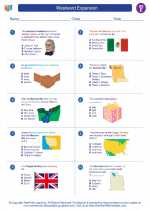Cultural Boundaries
Cultural boundaries refer to the barriers and divisions that exist between different cultures, often based on language, religion, customs, traditions, and values. These boundaries can be physical, such as geographical borders between countries, or they can be more abstract, such as the divisions between ethnic or religious groups within a society.
Types of Cultural Boundaries:
- Geographical Boundaries: These are the physical borders that separate one culture from another, such as national borders or natural barriers like mountains and rivers.
- Religious Boundaries: These boundaries are based on differences in religious beliefs and practices, and often lead to the formation of distinct cultural groups.
- Language Boundaries: Differences in language can create cultural boundaries, as language is a key component of a group's identity and communication.
- Customs and Traditions: Unique customs, traditions, and social practices can also create cultural boundaries between different groups.
Study Guide:
To understand cultural boundaries, it's important to consider the following questions:
- What are the different types of cultural boundaries?
- How do cultural boundaries impact interactions between different groups?
- What role does language play in creating cultural boundaries?
- How do cultural boundaries influence the development of a society or a nation?
- What are some examples of cultural boundaries in the world today?
By exploring these questions and examining real-world examples, you can gain a deeper understanding of how cultural boundaries shape the diversity and complexity of human societies.
Remember to consider the historical, geographical, and social factors that contribute to the formation and persistence of cultural boundaries.
Further reading and research on specific cultural boundaries around the world can also provide valuable insights into the dynamics of cultural interaction and exchange.
Understanding cultural boundaries is essential for fostering mutual respect, understanding, and cooperation among diverse cultural groups in an increasingly interconnected world.
[Cultural Boundaries] Related Worksheets and Study Guides:
.◂Social Studies Worksheets and Study Guides Fifth Grade. Westward Expansion

 Worksheet/Answer key
Worksheet/Answer key
 Worksheet/Answer key
Worksheet/Answer key
 Worksheet/Answer key
Worksheet/Answer key
